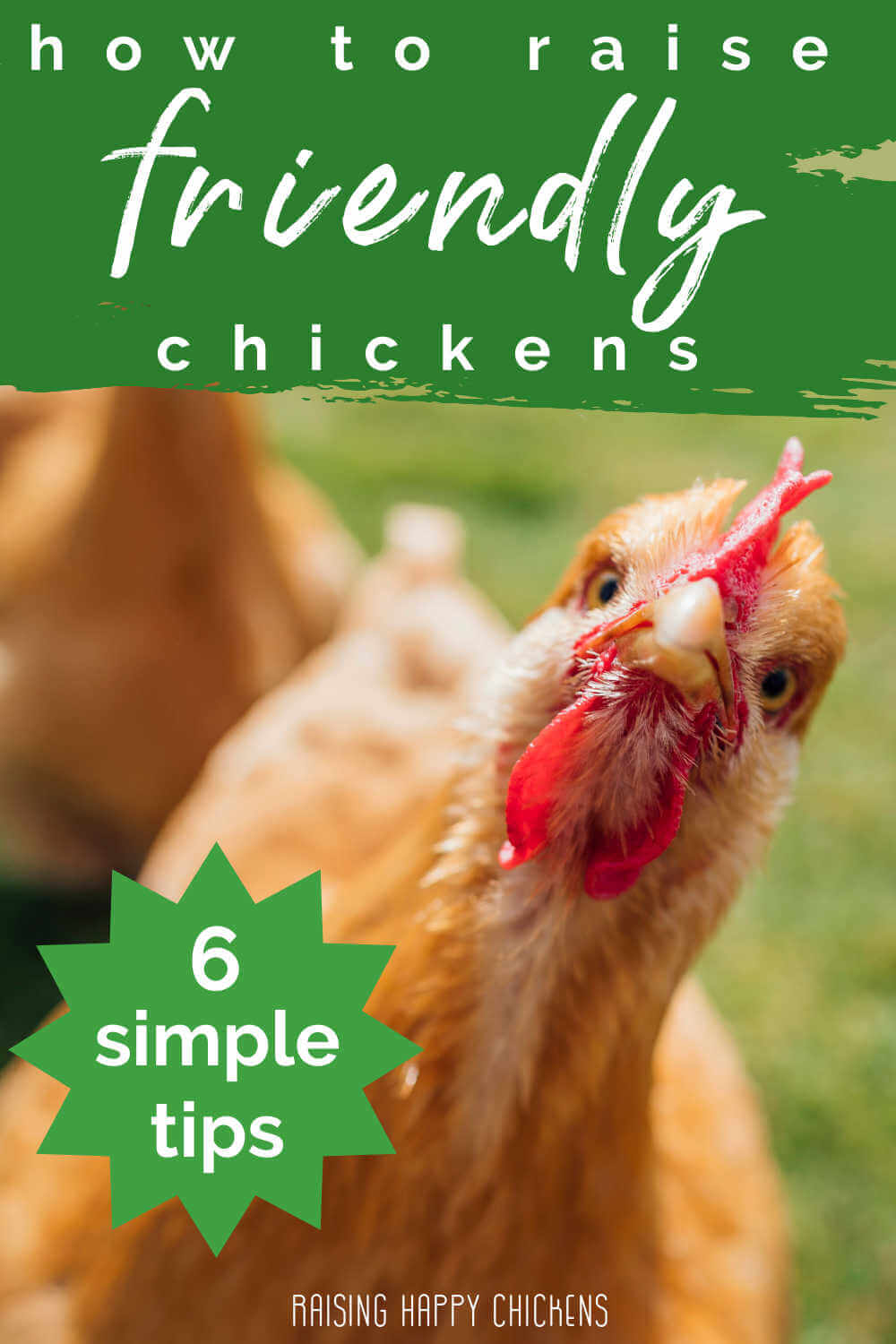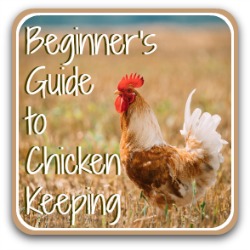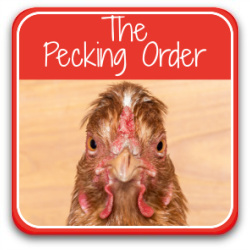- Home
- Beginner's Guide
- Making friends
How to raise friendly chickens, from chicks to adults.
For some, chickens are livestock. For others, they're pets. For many of us, they're somewhere in between: a daily presence that brings quiet joy and a sense of peace.
Whatever your reason for keeping them, life is always easier, healthier, and more rewarding when your flock is friendly.
Chickens aren't born trusting. Their first instinct is caution, which is a healthy response when the world is full of potential predators.
But friendship is possible, and deeply satisfying. A trusting flock is calmer, easier to handle, and a real pleasure to spend time with.
In this guide, I'll share six gentle, time-tested ways to raise friendly chickens. They'll help you to build trust, reduce fear, and create a calm flock that enjoys your company.
Because sitting quietly among your hens isn't just one of life's simple pleasures.
It's a peaceful, grounding moment that reminds us how small acts of patience can bring calm to the world, as well as to the chicken run.
Whether you're starting with tiny chicks or getting to know your grown hens better, these steps will help your chickens feel safe, confident, and content in your care.
🪶 Featherlight Takeaways.
Quick insights from this article: especially helpful if you want your flock (from tiny chicks to older hens) to feel calm, confident, and friendly around you and your family.
- Friendly chickens are calmer, easier to handle, and bring a sense of peace to your daily routine.
- It's critical to be able to routinely and calmly handle chickens to check for signs of illness.
- Trust is built slowly through kindness, consistency, and time spent together.
- These six steps work for both chicks and adult birds. Start early, go gently, and enjoy the process.
1: Choose friendly chicken breeds.
Most breeds can learn to trust, but some are naturally more people-friendly. It's easier to start with calm, curious hens, especially if children will help care for them.
Although most chicken breeds can be taught to make friends, some are more adaptable than others. Generally speaking, breeds which are excellent foragers tend to be quite independent and less willing to become reliant on human company.
The Livorno (Leghorn) is a good example of a breed that prefers independence. Reliable and resourceful, but not one to linger for cuddles.
If you'd rather have birds that enjoy company, these are my top four, based on my own flock.
1. Silkie chickens: the ultimate puffball, wonderfully gentle and the perfect choice for young children.
2. Buff Orpington: big, kind-hearted birds, excellent mothers and reliable, steady layers. They were the Queen Mother’s favourite, and now kept as one of King Charles' personal flock, for good reason. A good choice for teens, a bit too large for pre-teens to hold.
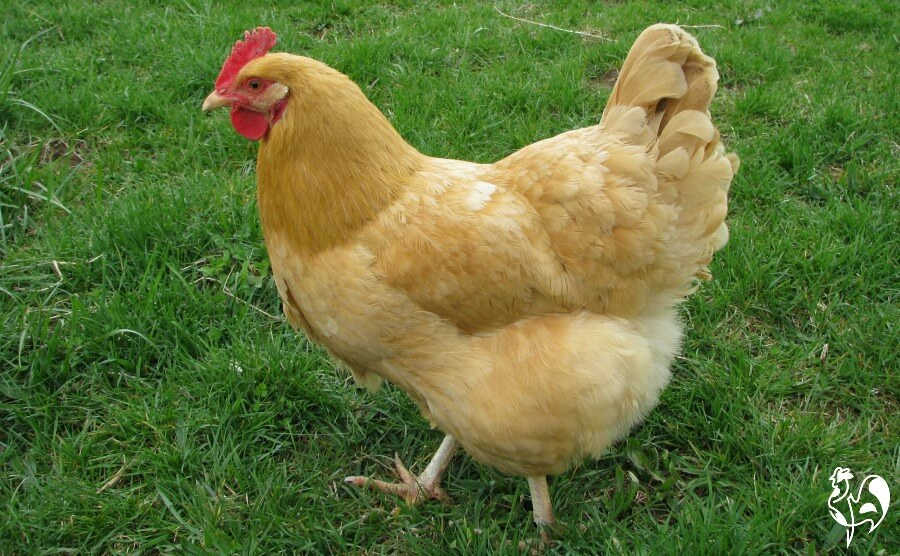 One of my friendly Buff Orps, off for a morning stroll!
One of my friendly Buff Orps, off for a morning stroll!3. Speckled Sussex: chatty and friendly with spectacular feathering, the Speckled Sussex is always part of my flock. If you like a curious chicken who will follow you round all day long, this is the choice for you.
4. Red Stars: also known as Golden Comet, Isa Brown and red sex-linked, these are the common brown chicken. One of the most reliable egg-layers ever, they're easy to care for, with funny, curious personalities.
They can be bullies of the pecking order though, so be aware of the potential need to protect gentler flock members. But with people, there's not another like them.
Always remember basic hygiene whenever handling or sitting with baby chicks or chickens.
- Don't touch your face, or put fingers near the eyes or mouth, when handling.
- Wash hands in warm water, using a good quality soap for at least 20 seconds, before rinsing off.
- Help children follow the same routine.
2: Start early.
Chickens remember more than we think. When chicks are raised by a hen, they bond with her. When they’re raised by us, we become that trusted figure: the "mother hen".
But that depends on us spending enough calm, gentle time with them.
So, begin their "friendliness training" as soon as they hatch or arrive from a hatchery or breeder. Short, frequent visits to the early brooder work best: a few quiet minutes several times a day is plenty for young or new birds.
Start by simply placing your hand in the brooder so they grow used to it. Talk softly, and move slowly and quietly.
As their confidence builds, try light strokes and brief, gentle holds. Always support their bodies.
Let children join in, showing them how to cup the chick gently between both hands so the chicken feels safe and the child won't drop it.
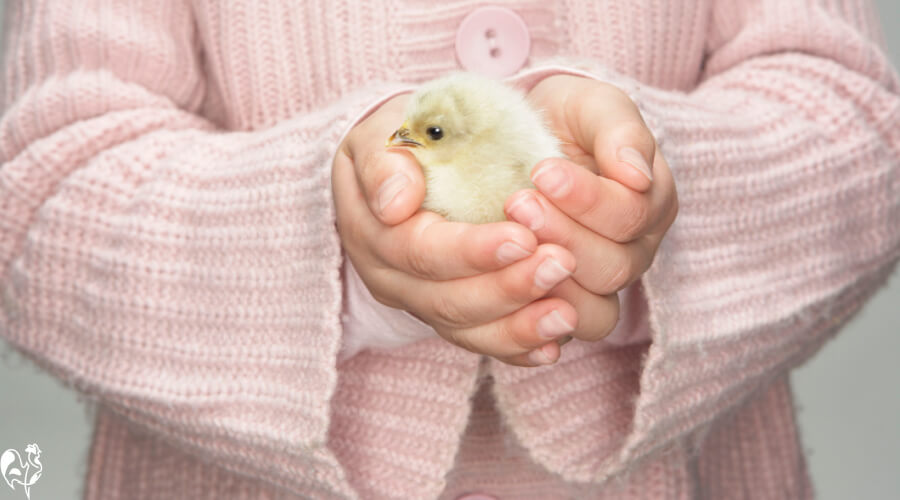 Teach children to cup baby chicks gently.
Teach children to cup baby chicks gently.And yes, tiny treats help too! Offer age-appropriate nibbles (sparingly), so the chicks learn that you always bring good things.
3: Raising friendly adult chickens.
Adult hens can take a little longer to warm up than chicks, but patience and routine work wonders. Calm, regular time together helps them learn that you're safe, predictable and not a threat.
Spend a few minutes each day in or near the run so they get used to your presence. Move slowly, talk softly, and let them choose whether to approach you or wander off to forage.
Never try to force a chicken to sit on your lap or be held if she doesn’t want to: trust grows best when it's offered, not demanded.
A few simple habits make a big difference:
- Sit quietly near your flock so they become used to your voice and movements.
- Start by sitting on the ground. You'll appear less of a threat, and it's a great place to snap some chicken-eye views of the world!
- Offer treats on the ground first. As they become used to your presence, try holding the treats in your hand.
- Avoid sudden noises or quick gestures that could startle them.
- Be patient! Some chickens will come to you in days, for others it may take weeks.
🐥 A note from my flock: early mornings are my favourite time in the run. I take a mug of coffee and some treats (usually mealworms), and just sit quietly while my hens peck around my feet.
They chatter softly, the world feels still, and it's hard not to smile. This is what calm friendship with chickens looks like: it's a great stress reliever!
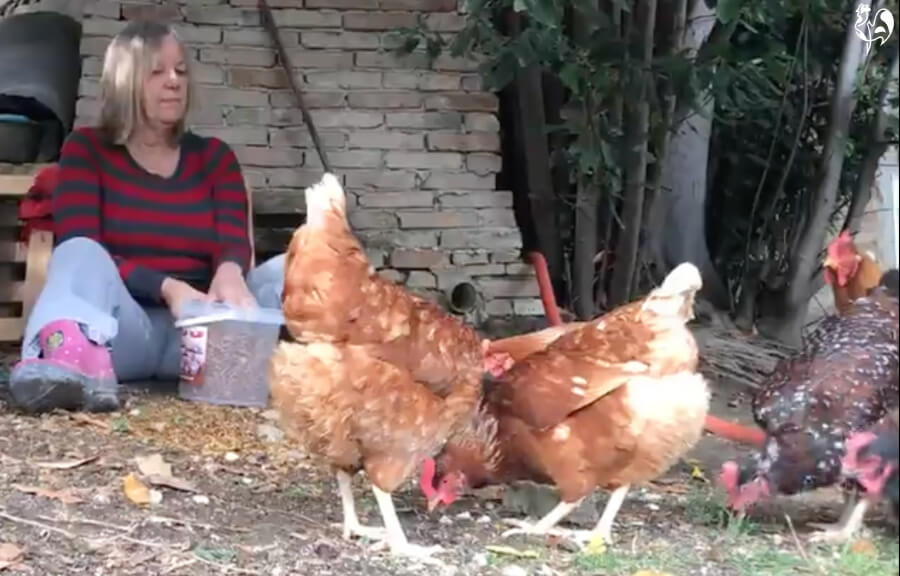 My chickens are particularly partial to a few mealworm treats!
My chickens are particularly partial to a few mealworm treats!Remember that this quiet time is also a good opportunity for a health check. The more comfortable your hens are around you, the easier it is to look at eyes, feathers and combs without stress for either human or chicken.
4: Talk to your chickens!
Chickens may not understand every word you say (though some of mine certainly act as if they do), but they do learn to recognise voices. Research has shown that over time, they can distinguish tone, pitch, and rhythm.
Most importantly, they learn that your voice means safety.
I always talk to my chickens when I approach the run or open the coop. It's a simple habit, but it prevents that sudden startled reaction when they're taken by surprise.
Even a quiet "good morning, girls" lets them know who's coming. And full disclosure: I often sing to my chickens, too!
If you raise chicks indoors, talk as you move around them: they will soon learn that your voice is a constant, familiar sound which makes them feel secure. When they move outside later, that same voice reassures them that all is well.
I keep up the chatter when I'm working in the run, and when I'm hand-feeding my flock. It doesn't matter what I say: often it's just me talking through my day or muttering about the weather.
My hens seem to enjoy it, and some will cluck back as if we're sharing the news. More sociable chickens, like my Red Star, Claudia, will stop what they're doing and watch me closely, listening for their cue to join in.
Talking to your flock is one of the simplest ways to build trust. It's calm, kind, and consistent: three things chickens understand perfectly.
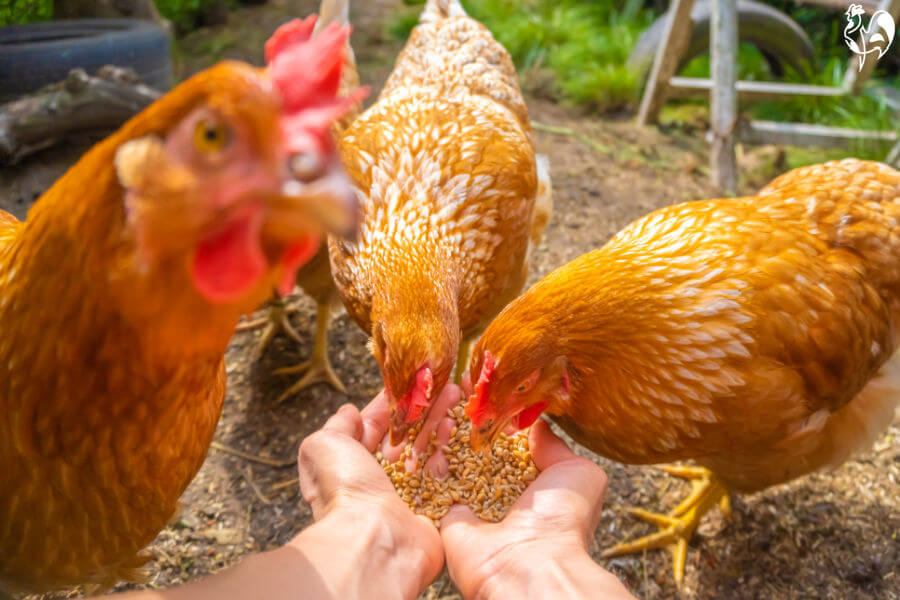 Claudia chicken is also a persistent photo-bomber!
Claudia chicken is also a persistent photo-bomber!5: Handle them with care!
There’s an art to holding chickens in a way which keeps both you and them calm.
I was taught at a chicken-keeping course held at King Charles’s country home, Highgrove House, run by the UK's Poultry Club, and I've followed the same advice ever since.
When you pick up a chicken, confidence and gentleness are equally important. Chickens sense hesitation, and a nervous handler can make them flap and panic. Once you know the right way, they usually settle quickly and may even enjoy being held.
Here's how to do it safely:
- Keep the wings tucked gently against the body: it makes the chicken feel secure.
- Rest the keel (breast bone) along your arm so the bird's weight is supported evenly.
- Spread your fingers between the legs so they hang comfortably, not cramped.
- Hold the bird close to your body to prevent flapping or sudden struggling.
Never hold a chicken upside down by its legs. It's painful and can cause internal injury.
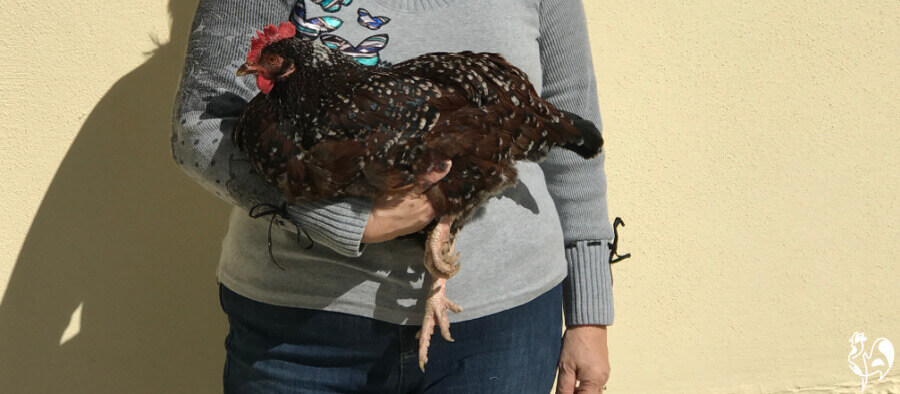 One of my Speckled Sussexes, secure in letting her keel bone rest on my arm.
One of my Speckled Sussexes, secure in letting her keel bone rest on my arm.How to help children hold chickens.
Older children can learn to hold chickens in the same way, but always supervise and start with small, gentle breeds like Silkies or bantams.
Very young children might prefer to sit on the ground and let the chicken rest in their lap for a few calm strokes.
Handled properly, most hens become relaxed in your arms, and that trust makes every bit of care easier, from health checks to cuddles.
6: Grow plants!
Time and treats go a long way in building friendship, but chickens also thrive when their surroundings are peaceful and full of life.
Plants serve more than one purpose. They provide shelter from wind and sun, encourage foraging, and help keep the ground cool and dry. Chickens enjoy pecking at leaves, dust-bathing under stems, and exploring the shaded corners between pots.
Adding some chicken-friendly plants to your coop or run creates a calm, natural space where you and your flock can both relax.
It doesn't need to be elaborate. A few pots of herbs or flowers are enough to soften the space and offer safe, interesting snacks for your hens. And don't forget the benefit of some healthy weeds!
Larger runs can take small shrubs, fruit trees, or a patch of sunflowers or roses. Anything that gives shade, colour, and variety is an excellent choice.
Even if you only have a small coop, try adding a couple of flower pots to stand outside, or a hanging basket of strawberries nearby.
Planting also gives you a reason to spend quiet, unhurried time in the run: digging, pruning, and simply watching your flock explore. It's a calm, shared routine that benefits everyone.
Take a look at this short video for inspiration!
Friendliness, trust, and peace don't come from grand gestures, but from steady, gentle care. A calm, green living space is one of the simplest gifts you can give your chickens – and yourself.
Answers to more questions about raising friendly chickens.
How can I make my chickens friendly?
How can I make my chickens friendly?
Spend calm, consistent time with them. Move slowly, speak softly, and let them come to you at their own pace. Gentle handling and small treats help them associate you with safety and good things.
Can even new adult chickens be made to be friendly?
Can even new adult chickens be made to be friendly?
Yes, though it takes patience. Even older hens can learn to trust when they're treated gently and given time to adjust. Routine and kindness matter more than age.
Which are the friendliest chicken breeds?
Which are the friendliest chicken breeds?
In my experience, Silkies, Buff Orpingtons, Speckled Sussex, and Red Stars are among the gentlest breeds. They're curious, calm, and usually happy to spend time with people.
How do I stop my chickens being scared of me?
How do I stop my chickens being scared of me?
Avoid sudden movements or loud noises. Sit quietly near the run so they can watch you without pressure. Talk gently to them, even when you're doing basic tasks around the coop and run. Take treats when you go into the run so they associate you with happy things.
Over time, they'll learn that you're safe to be around.
Do chickens recognise their owners?
Do chickens recognise their owners?
Yes, research shows that they definitely do! Chickens can recognise faces, voices, and even footsteps. Familiar sights and sounds make them feel secure, which is one more reason to talk softly and keep your routine consistent.
If you found this article helpful, you may also like these.
- Home
- Beginner's Guide
- Making friends
